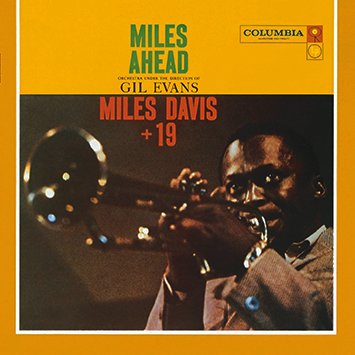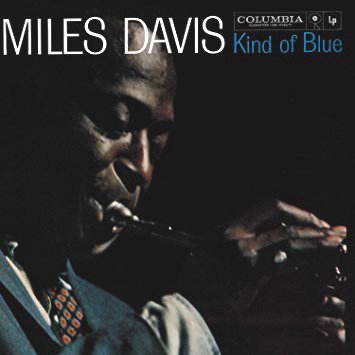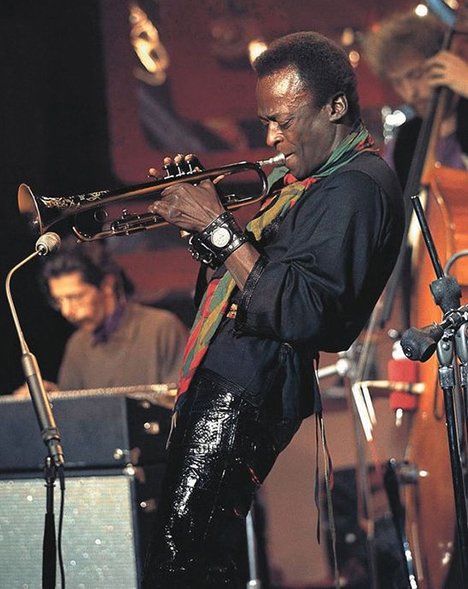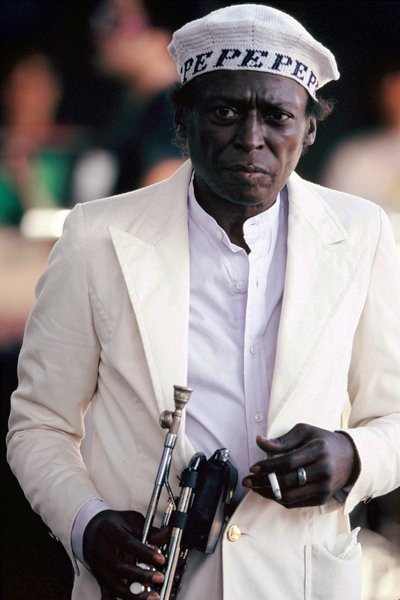Wayne Shorter (saxo soprano), Miles Davis (trompeta), John McLaughlin (guitarra eléctrica), Joe Zawinul (piano eléctrico, órgano), Herbie Hancock y Chick Corea (piano eléctrico), Dave Holland (contrabajo) y Tony Williams (batería). Extraído del álbum In A Silent Way (1969) de Miles Davis.
Miles Davis siempre siguió su propio camino sin preocuparse por los estilos. Álbums como Miles Ahead (1957) o Kind of Blue (1959) no envejecen porque transmiten las experiencias más emotivas que cualquier clase de música puede ofrecer. In A Silent Way traslada al oyente a un mundo intemporal y onírico de sonido puro y primitivo que proporciona sosiego a su alma sumergiéndolo en un océano como un bebé en el útero materno, sin medida rítmica, melódica ni temporal. Su calidad abstracta está basada en una sencillez aparente como resultado de una complejidad sonora de efectos embriagadores.
Miles Davis always followed his own path without worrying about styles. Albums such as Miles Ahead (1957) or Kind of Blue (1959) don’t age because they convey the most emotional experiences that any kind of music can offer. In A Silent Way takes the listener into a timeless, dreamlike world of pure and primitive sound that gives calmness to his soul by immersing him in an ocean like a baby in his mother’s womb, without rhythmic, melodic or temporal measure. Its abstract quality is based on an apparent simplicity as a result of a sonorous complexity of intoxicating effects.


A principios de 1969, el grupo de Miles Davis estaba compuesto por él mismo a la trompeta, el saxofonista Wayne Shorter, el teclista Chick Corea, el contrabajista Dave Holland y el batería Jack DeJohnette. Para grabar su siguiente álbum llamó a Herbie Hancock con el fin de añadir un segundo piano eléctrico, y a Tony Williams, que sabía cómo deshacer los nudos con los que están atados los patrones del ritmo, para reemplazar a DeJohnette. Ambos habían pertenecido anteriormente al segundo gran quinteto de Davis. Además, este le pidió al también teclista Josef Zawinul que compusiera música para la ocasión e incorporó al guitarrista inglés John McLaughlin, que acababa de llegar a Nueva York para integrarse en el Tony Williams Lifetime.
In early 1969 Miles Davis’s group was composed by himself on trumpet, saxophonist Wayne Shorter, keyboardist Chick Corea, double bassist Dave Holland and drummer Jack DeJohnette. To record his next album he called Herbie Hancock to add a second electric piano, and Tony Williams, who knew how to untangle the knots with which the rhythm patterns are tied, to replace DeJohnette. Both had previously been part of Davis’ Second Great Quintet. In addition, he asked to the also keyboardist Josef Zawinul to compose music for the occasion and incorporated the English guitarist John McLaughlin, who had just arrived in New York to join the Tony Williams Lifetime.

Los temas son largas jams sin apenas estructura establecida, cuya cohesión y solidez demuestran la experiencia y sensibilidad de los músicos mientras Davis los dirigía. Este había apostado decididamente por el sonido eléctrico con la presencia revolucionaria de tres teclados eléctricos (incluyendo a Zawinul) y una guitarra eléctrica. In a Silent Way es reconocido por críticos y fans como uno de los mayores logros de Davis, en el que este aprendió a unir la música y la tecnología. Lo que suena aquí no es jazz, rock ni lo que más tarde se llamaría «jazz fusión», sino algo universal de etérea y melódica belleza. Davis tuvo que renunciar a su extraordinario trabajo con el saxofonista alto y padre del bebop Charlie Parker, y el saxofonista tenor John Coltrane, para construir el futuro no solo del jazz, sino de la propia música.
The tracks are long jams with hardly any established structure, whose cohesion and solidity demonstrate the experience and sensitivity of the musicians while Davis led them. He had decidedly bet on electric sound with the revolutionary presence of three electric keyboards (including Zawinul) and an electric guitar. In a Silent Way is recognized by critics and fans as one of Davis’ greatest achievements, in which he learned to bring music and technology together. What sounds here is not jazz, rock or what would later be called “jazz fusion”, but something universal of ethereal and melodic beauty. Davis had to give up his extraordinary work with alto saxofonist and father of bebop Charlie Parker, and tenor saxofonist John Coltrane, to build the future not only of jazz, but of music itself.

Translated with the help of DeepL
℗ Columbia Records


Si te ha gustado el tema, quizá querrás escuchar también el primero de este álbum:
If you liked the track, you might also want to listen to the first one on this album:

